Jan Hus: Czech Reformer And Bohemian Religious Leader Was Burned At Stake For Heresy
A. Sutherland - AncientPages.com - Jan Hus (1372 – 1415) was a controversial Czech thinker and reformer in the Roman Catholic Council of Constance (1414–18). He was convicted of heresy and burned at the stake.
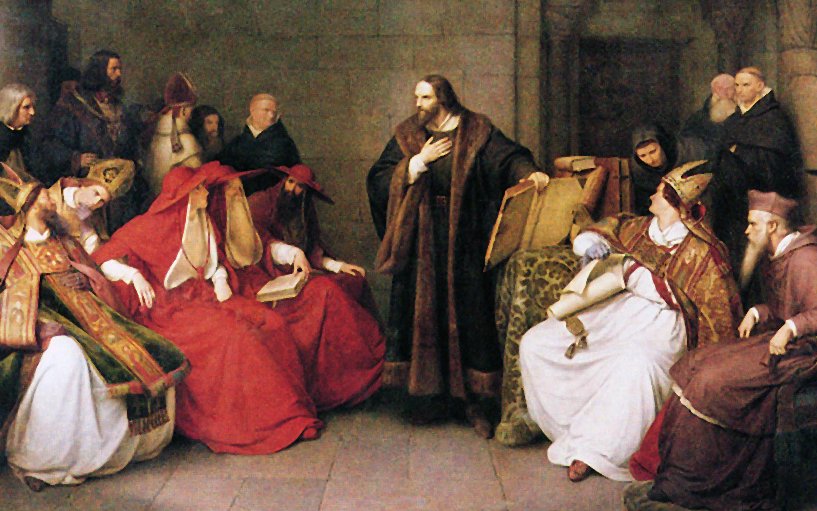 Jan Hus at the Council of Constance, 19th-century painting by Karl Friedrich Lessing. Public Domain
Jan Hus at the Council of Constance, 19th-century painting by Karl Friedrich Lessing. Public Domain
Unfortunately, he was not the only one. The medieval Church struggled violently against rebels who criticized the doctrines of the Catholic Church. This institution controlled the state and the people, regardless of their status.
Jan Hus was among those Christians who – not only theoretically – but openly and publicly disagreed with the Church's teachings. He was a Czech farmer, who studied in Prague, became a master, dean, and finally rector at the University of Prague and the Bethlehem church.
Strongly influenced by the writings of an English scholastic philosopher and thinker, John Wycliffe (c.1329-1384), Hus attacked the world's priesthood and the Church's riches. As his preaching was in the Czech language, it enjoyed great popularity, and he had many listeners and active supporters.
Hus was a brave man who did not hesitate to criticize the Church's different actions and abuses committed by the clergy, especially in granting indulgences.
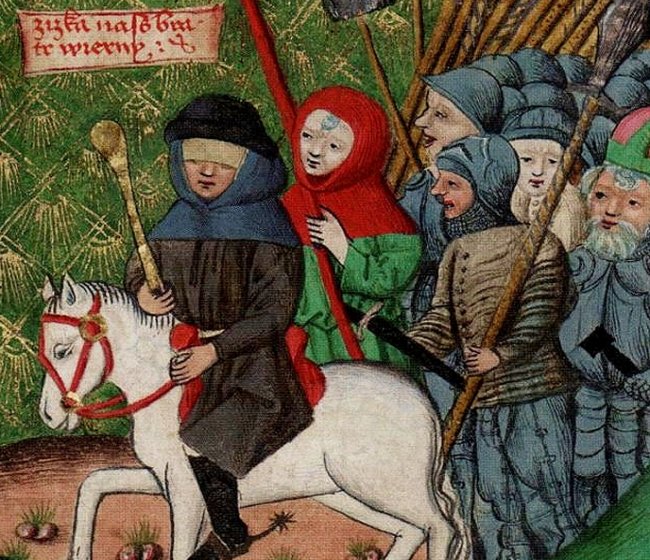 Jan Žižka (c. 1360 – 11 October 1424) - a Czech general, a contemporary and follower of Jan Hus, Hussite military leader, leading troops of Hussites. Janíček Zmilelý / Public Domain
Jan Žižka (c. 1360 – 11 October 1424) - a Czech general, a contemporary and follower of Jan Hus, Hussite military leader, leading troops of Hussites. Janíček Zmilelý / Public Domain
Unlike the vast majority of preachers at the time, Hus was an advocate for women and feminism.
Hus stated that "Women were made in the image of God and should fear no man." He allowed women to preach and serve in battle. Later, since women were allowed to fight, they played a critical role in the Hussite Wars.
When the Council of Constance assembled in 1414, Hus was asked to be there. He was to officially present his religious reform views to church dignitaries at the Council.
Emperor Sigismund of Luxembourg, the spiritual and military leader of several crusades, who reigned from l4l0 to 1437, officially guaranteed Hus' safety at the meeting, or so it seemed. However, Emperor Sigismund was not worthy of Hus' trust. He took part in the capture of the Czech precursor of Protestantism, Jan Hus, which resulted in his being tried and burned at stake.
Immediately after arriving in Constance, Germany, on November 14, 1414, Hus was arrested, and in June 1415, he was brought before the court as a heretic.
According to the Council, John Hus taught, asserted, and preached many errors and heresies of John Wycliffe, which have been condemned.
The prosecutors refused him the right to explain his views, and Hus declined to condemn his thirty theses from the De Ecclesia treatise from 1413, which was considered heretical. Still, some admired his theories.
His teachings were erroneous, others offensive to the ears of the devout, and many of them were seditious. Many of Hus' ideas were considered notoriously heretical and long ago rejected and condemned by the Church. The Council had to forbid them to be preached, taught, or approved.
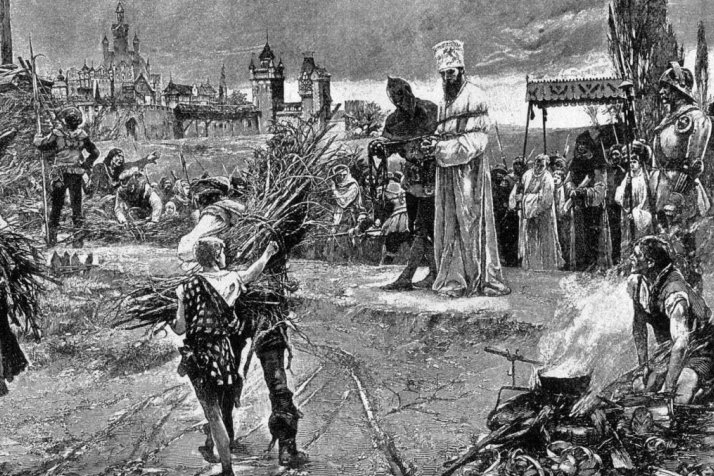 Burning of Jan Hus at the stake at Council of Constance. Carl Gustaf Hellqvist (1851–1890). Public Domain
Burning of Jan Hus at the stake at Council of Constance. Carl Gustaf Hellqvist (1851–1890). Public Domain
Therefore, the thinker was deposed and degraded from the order of the priesthood and the other orders he held. The Council voted against him and sentenced him to death at stake.
On July 6, 1415, Hus was burned at the stake for heresy against the doctrines of the Catholic Church. Burning at the stake of Jan Hus was a consequence of Hus' open speech against the Church.
The execution of this brave man sparked anger and revolts and led to the Hussite Wars of 1419–1434. To this day, Hus is considered the national hero of the Czech Republic. When in 1,119 Sigismund I of Luxembourg inherited the Czech crown from his brother, a long and fierce war broke out because the Hussite blamed the emperor for the death of his spiritual leader.
The Hussites were a powerful pre-Protestant Christian movement, and Sigismund I of Luxembourg was forced together with the Church to negotiate with the Hussites. The settlement between the parties concerned was crowned in 1435, in which the Catholic Church officially allowed Bohemia to practice its version of Christianity (Hussitism).
For the first time in history, the Catholic Church caused to coexist in harmony with two faiths on a territory it controlled. Hussitism foreshadowed the European Reformation and became a step forward for religious freedom.
Nearly six centuries later, in 1999, Pope John Paul II expressed "deep regret for the cruel death inflicted" on Hus and added "deep sorrow" for Hus's death and praised his "moral courage."
Written by – A. Sutherland - AncientPages.com Senior Staff Writer
Updated on August 4, 2022
Copyright © AncientPages.com All rights reserved. This material may not be published, broadcast, rewritten or redistributed in whole or part without the express written permission of AncientPages.com
Expand for referencesReferences:
Benazzi N: 1001 faktów z historii Kościoła.
Piskorski J., Polska-Niemcy. Blaski i cienie tysiacletniego sasiedztwa
More From Ancient Pages
-
 Yokai Hone-Onna (‘Skeleton Woman’): Deceptive Succubus That Feeds On Man’s Soul And Vitality In Japanese Folklore
Featured Stories | Jan 20, 2020
Yokai Hone-Onna (‘Skeleton Woman’): Deceptive Succubus That Feeds On Man’s Soul And Vitality In Japanese Folklore
Featured Stories | Jan 20, 2020 -
 Hiding Tunnel Complex Dated To The Bar Kokhba Revolt Revealed Near The Sea of Galilee
Archaeology | Apr 23, 2024
Hiding Tunnel Complex Dated To The Bar Kokhba Revolt Revealed Near The Sea of Galilee
Archaeology | Apr 23, 2024 -
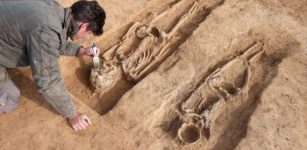 Mystery Of The Faceless Woman Found In A 1,000-Year-Old Royal Grave
Archaeology | Nov 7, 2023
Mystery Of The Faceless Woman Found In A 1,000-Year-Old Royal Grave
Archaeology | Nov 7, 2023 -
 Silla: The Most Successful Of Three Korean Kingdoms
Featured Stories | Aug 22, 2023
Silla: The Most Successful Of Three Korean Kingdoms
Featured Stories | Aug 22, 2023 -
 Keshwa Chaca – Last Suspension Rope Bridge Of Inca People
Ancient Traditions And Customs | Apr 17, 2019
Keshwa Chaca – Last Suspension Rope Bridge Of Inca People
Ancient Traditions And Customs | Apr 17, 2019 -
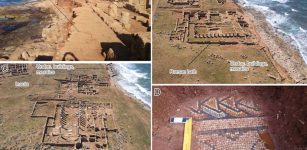 Archaeological Sites At Risk From Coastal Erosion On The Cyrenaican Coast Of Libya
Archaeology | Apr 15, 2023
Archaeological Sites At Risk From Coastal Erosion On The Cyrenaican Coast Of Libya
Archaeology | Apr 15, 2023 -
 Surprising Discovery Of Unique 3,500- Year-Old Arrowheads Made Of Shells In The Jotunheimen Mountains
Archaeology | Feb 20, 2023
Surprising Discovery Of Unique 3,500- Year-Old Arrowheads Made Of Shells In The Jotunheimen Mountains
Archaeology | Feb 20, 2023 -
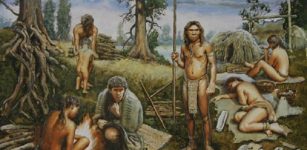 Humans Started Wearing Clothes 100,000 To 500,000 Years Ago
Ancient History Facts | Mar 17, 2018
Humans Started Wearing Clothes 100,000 To 500,000 Years Ago
Ancient History Facts | Mar 17, 2018 -
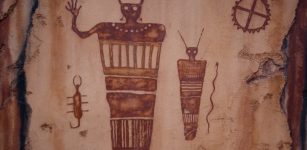 Mysterious 8,000-Year-Old Petroglyphs Of Unknown Beings Of Sego Canyon, Utah
Featured Stories | Sep 26, 2020
Mysterious 8,000-Year-Old Petroglyphs Of Unknown Beings Of Sego Canyon, Utah
Featured Stories | Sep 26, 2020 -
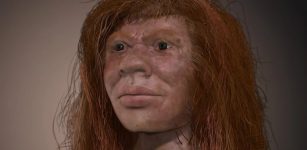 Mysterious Denny – 90,000-Year-Old Child Whose Parents Were Two Different Human Species
Featured Stories | Jul 25, 2023
Mysterious Denny – 90,000-Year-Old Child Whose Parents Were Two Different Human Species
Featured Stories | Jul 25, 2023 -
 Evidence Europeans Started Using Milk 7,400 Years Ago – New Study
Archaeology | Oct 18, 2022
Evidence Europeans Started Using Milk 7,400 Years Ago – New Study
Archaeology | Oct 18, 2022 -
 Intriguing Million-Year-Old Human Skull Offers Key Clues To Our Evolution
Archaeology | Sep 30, 2022
Intriguing Million-Year-Old Human Skull Offers Key Clues To Our Evolution
Archaeology | Sep 30, 2022 -
 Cappadocia And Huge Unique Selime Cathedral
Featured Stories | Mar 19, 2019
Cappadocia And Huge Unique Selime Cathedral
Featured Stories | Mar 19, 2019 -
 Indigenous Communities Used The Caribbean Sea As An Aquatic Highway
Archaeology | Jun 23, 2022
Indigenous Communities Used The Caribbean Sea As An Aquatic Highway
Archaeology | Jun 23, 2022 -
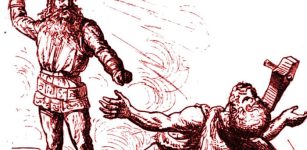 Giant Hrungnir Who Lost The Race And Engaged In A Deadly Duel With Mighty Thor In Norse Mythology
Featured Stories | Sep 19, 2018
Giant Hrungnir Who Lost The Race And Engaged In A Deadly Duel With Mighty Thor In Norse Mythology
Featured Stories | Sep 19, 2018 -
 Maori God Pourangahua And His Flying Bird Traversing The Ancient Skies
Featured Stories | Oct 4, 2015
Maori God Pourangahua And His Flying Bird Traversing The Ancient Skies
Featured Stories | Oct 4, 2015 -
 On This Day In History: Battle Of Lagos Took Place Between Royal Navy Of Britain and France – On August 19, 1759
News | Aug 19, 2016
On This Day In History: Battle Of Lagos Took Place Between Royal Navy Of Britain and France – On August 19, 1759
News | Aug 19, 2016 -
 Modern Humans Did Not Enter Europe By Sea – New Study Says
Archaeology | Mar 7, 2022
Modern Humans Did Not Enter Europe By Sea – New Study Says
Archaeology | Mar 7, 2022 -
 Strange Ancient Structures In The Northeastern U.S. Were Built By Unknown People With Shining Shields, Native Americans Say – Evidence Of Norsemen Or Celts?
Featured Stories | Apr 8, 2025
Strange Ancient Structures In The Northeastern U.S. Were Built By Unknown People With Shining Shields, Native Americans Say – Evidence Of Norsemen Or Celts?
Featured Stories | Apr 8, 2025 -
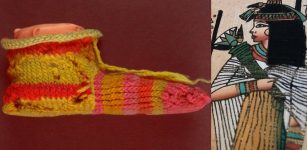 Ancient Egyptians Used Stripy Socks And May Have Invented Them
Ancient History Facts | Dec 5, 2018
Ancient Egyptians Used Stripy Socks And May Have Invented Them
Ancient History Facts | Dec 5, 2018
